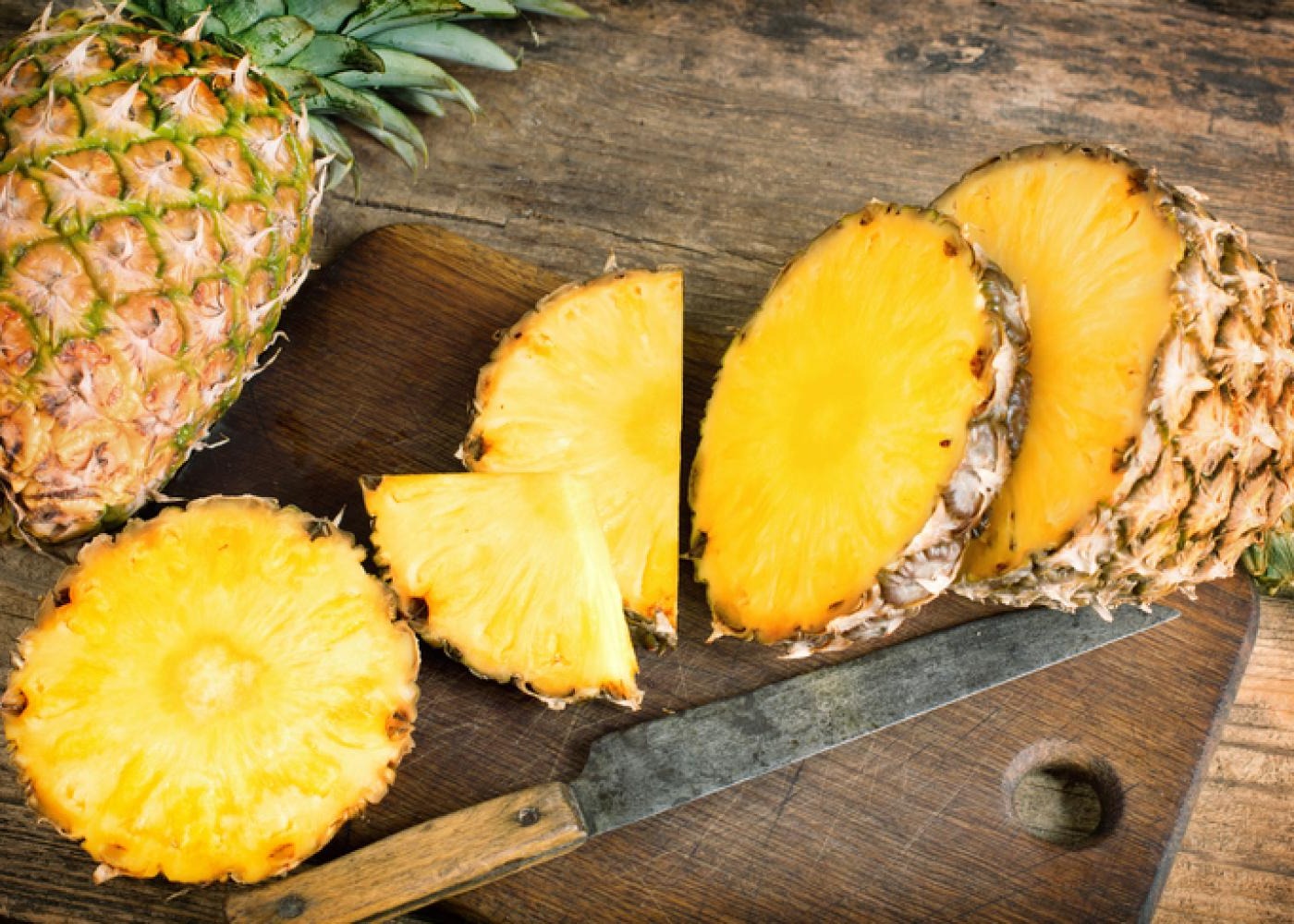
Pineapples are more than just a tasty tropical treat; they hold a treasure trove of fascinating facts! Did you know that pineapples were once so rare and expensive that they were considered a symbol of wealth? These spiky fruits have a rich history, from their origins in South America to their journey across the globe. Beyond their unique appearance and sweet flavor, pineapples are packed with vitamins, enzymes, and antioxidants that offer numerous health benefits. Whether you're a fan of pineapple on pizza or prefer it fresh, there's always something new to learn about this incredible fruit. Ready to dive into 45 amazing facts about pineapples? Let's get started!
Key Takeaways:
- Pineapples are a labor-intensive crop, taking 18-24 months to produce one fruit. They're rich in vitamin C, bromelain, and antioxidants, offering numerous health benefits.
- Pineapples have a rich history and cultural significance, symbolizing wealth and hospitality. They're versatile in culinary uses and have potential health and wellness benefits.
Pineapples: A Tropical Delight
Pineapples are more than just a sweet, tangy fruit. They have a rich history, unique growing process, and surprising health benefits. Let's dive into some fascinating facts about this tropical delight.
-
Pineapples originated in South America, specifically in the region between Brazil and Paraguay.
-
The fruit was first discovered by Europeans when Christopher Columbus encountered them in 1493 on the Caribbean island of Guadeloupe.
-
Pineapples belong to the Bromeliaceae family, making them relatives of Spanish moss and certain types of air plants.
-
Each pineapple plant produces only one fruit per year, making them a labor-intensive crop.
-
The name "pineapple" comes from early European explorers who thought the fruit resembled a pine cone.
Growing and Harvesting Pineapples
Growing pineapples is a unique process that requires patience and specific conditions. Here are some intriguing facts about how pineapples are cultivated and harvested.
-
Pineapples grow from the ground, not on trees, as many people mistakenly believe.
-
It takes about 18-24 months for a pineapple plant to produce its first fruit.
-
Pineapples are grown from the crown of the fruit, which is planted in the soil to start a new plant.
-
The fruit is ready to harvest when it turns a golden yellow color and emits a sweet aroma.
-
Pineapples are typically harvested by hand to avoid damaging the delicate fruit.
Nutritional Benefits of Pineapples
Pineapples are not only delicious but also packed with nutrients that offer numerous health benefits. Let's explore some of the nutritional perks of this tropical fruit.
-
Pineapples are an excellent source of vitamin C, which helps boost the immune system.
-
The fruit contains bromelain, an enzyme that aids in digestion and reduces inflammation.
-
Pineapples are low in calories, making them a healthy snack option.
-
They are rich in antioxidants, which help protect the body against free radicals.
-
Pineapples provide a good amount of manganese, essential for bone health and metabolism.
Pineapples in Culture and History
Pineapples have played significant roles in various cultures and historical events. Here are some interesting facts about their cultural and historical significance.
-
In the 17th century, pineapples were a symbol of wealth and hospitality in Europe.
-
Pineapples were so rare and expensive in colonial America that people would rent them for parties to display their wealth.
-
The fruit is a traditional symbol of welcome and hospitality in the southern United States.
-
Pineapples were once used as a treatment for scurvy due to their high vitamin C content.
-
The Hawaiian Islands are one of the largest producers of pineapples, thanks to the efforts of James Dole, who established the Hawaiian Pineapple Company in 1901.
Fun and Quirky Pineapple Facts
Pineapples have some fun and quirky aspects that make them even more interesting. Let's take a look at some of these amusing facts.
-
Pineapples can regenerate. You can grow a new plant by cutting off the top of a pineapple and planting it.
-
The fruit's skin is made up of individual berries that fuse together around a central core.
-
Pineapples can be used as a natural meat tenderizer due to the bromelain enzyme.
-
The leaves of the pineapple plant can be used to produce a textile fiber called piña, which is used in traditional Filipino clothing.
-
Pineapples do not continue to ripen after being picked, so they should be harvested at peak ripeness.
Pineapples in Culinary Uses
Pineapples are versatile in the kitchen and can be used in various dishes, both sweet and savory. Here are some culinary facts about this tropical fruit.
-
Pineapple is a key ingredient in the famous Hawaiian pizza, which also includes ham and cheese.
-
The fruit is often used in tropical cocktails, such as piña coladas and mai tais.
-
Pineapple can be grilled, baked, or sautéed to enhance its natural sweetness.
-
The fruit pairs well with both sweet and savory dishes, making it a popular ingredient in salads, salsas, and desserts.
-
Pineapple juice is a popular beverage and can also be used as a marinade for meats.
Health and Wellness Uses of Pineapples
Beyond their nutritional benefits, pineapples have various uses in health and wellness. Here are some ways this fruit can contribute to overall well-being.
-
Bromelain in pineapples can help reduce sinus inflammation and alleviate symptoms of sinusitis.
-
The fruit's high vitamin C content can help improve skin health and reduce the appearance of wrinkles.
-
Pineapple juice can be used as a natural remedy for sore throats and coughs.
-
The fruit's anti-inflammatory properties can help reduce symptoms of arthritis.
-
Eating pineapples can aid in weight loss due to their low calorie and high fiber content.
Pineapples in Science and Research
Pineapples have been the subject of various scientific studies and research. Here are some fascinating facts about pineapples in the world of science.
-
Researchers are studying bromelain for its potential to treat cancer and other diseases.
-
Pineapple enzymes are used in the production of certain medications and supplements.
-
The fruit's antioxidants are being researched for their potential to prevent chronic diseases.
-
Pineapple waste, such as the skin and core, is being explored for use in biofuel production.
-
Scientists are investigating the use of pineapple fibers in biodegradable plastics and other sustainable materials.
Pineapples Around the World
Pineapples are enjoyed and cultivated in various parts of the world. Here are some global facts about this beloved fruit.
-
Thailand is one of the largest exporters of pineapples, supplying a significant portion of the world's canned pineapple.
-
In the Philippines, pineapples are a major agricultural product and are used to make piña cloth.
-
Costa Rica is known for producing some of the sweetest pineapples in the world.
-
Pineapples are a popular fruit in tropical regions, including the Caribbean, Southeast Asia, and Central America.
-
The fruit is celebrated in various festivals around the world, such as the Pineapple Festival in Jensen Beach, Florida.
Pineapples: More Than Just a Tropical Treat
Pineapples aren't just tasty; they're packed with fascinating facts. From their unique growth process to their rich history, these fruits have a lot more going on than meets the eye. They symbolize hospitality and have even played roles in royal banquets. Their enzymes aid digestion, making them not only delicious but also beneficial for health. Plus, their versatility in recipes, from sweet desserts to savory dishes, makes them a kitchen favorite.
Whether you're enjoying a slice on a hot day or using it in a complex dish, pineapples bring a touch of the exotic to your table. Next time you see one, remember all the interesting tidbits behind this spiky fruit. Pineapples truly are a blend of history, health, and flavor. Dive into your next pineapple with a newfound appreciation!
Frequently Asked Questions
Was this page helpful?
Our commitment to delivering trustworthy and engaging content is at the heart of what we do. Each fact on our site is contributed by real users like you, bringing a wealth of diverse insights and information. To ensure the highest standards of accuracy and reliability, our dedicated editors meticulously review each submission. This process guarantees that the facts we share are not only fascinating but also credible. Trust in our commitment to quality and authenticity as you explore and learn with us.


